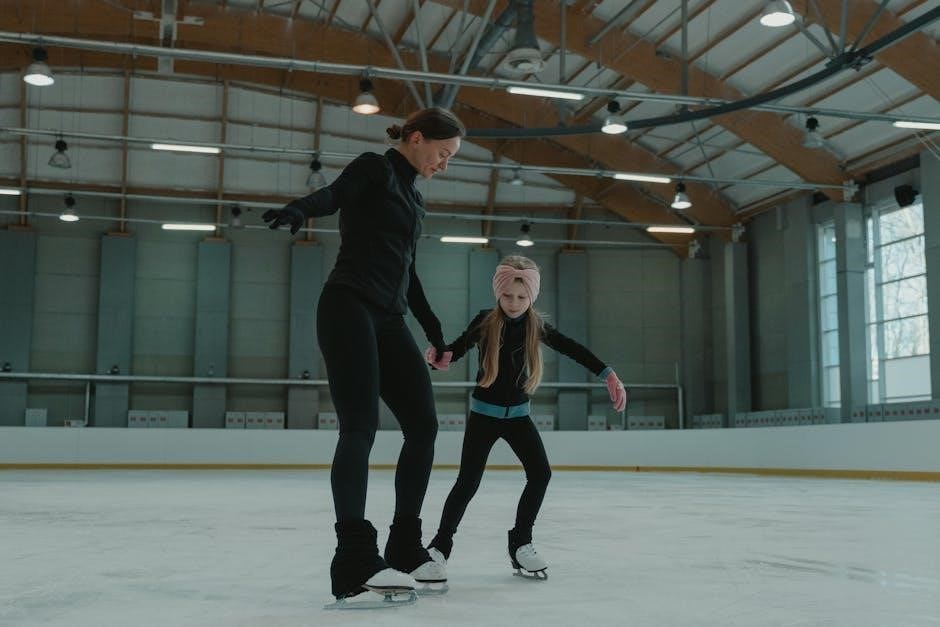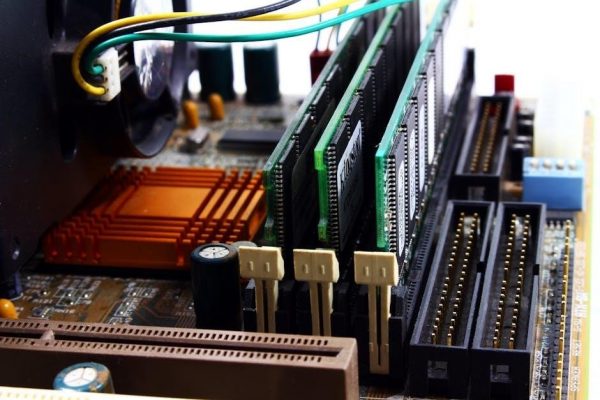The Tibialis Posterior muscle plays a crucial role in foot mechanics, providing arch support and aiding in inversion and plantar flexion. Strengthening this muscle through targeted exercises enhances stability and prevents injuries.
Overview of the Tibialis Posterior Muscle
The Tibialis Posterior muscle is a deep muscle located in the lower leg, playing a vital role in foot and ankle movement. It originates from the tibia and fibula bones, descending to form a tendon that attaches to the bones in the foot’s arch. This muscle is essential for supporting the medial arch, enabling inversion (turning the foot inward), and aiding in plantar flexion (pointing the foot downward). The Tibialis Posterior muscle is crucial for maintaining balance and stability during activities like walking, running, and climbing stairs. Its proper function ensures efficient weight distribution across the foot, preventing excessive pronation or flat-footedness. Strengthening this muscle through targeted exercises, as outlined in various Tibialis Posterior exercises PDF guides, is key to maintaining lower limb health and preventing injuries.

Role in Foot and Ankle Stability
The Tibialis Posterior muscle is fundamental to foot and ankle stability, serving as a key stabilizer during dynamic movements. It supports the medial arch, preventing excessive pronation and providing a rigid platform for push-off during gait. This muscle also assists in inversion, helping to maintain proper foot alignment and reducing the risk of ankle sprains. Its tendon acts as a pulley system, guiding forces efficiently from the leg to the foot. Weakness or dysfunction in the Tibialis Posterior can lead to flat-footedness, impaired balance, and increased susceptibility to injuries. Strengthening exercises, detailed in Tibialis Posterior exercises PDF resources, are essential for restoring and enhancing this muscle’s stabilizing function, thereby improving overall lower limb mechanics and athletic performance.

Causes and Symptoms of Tibialis Posterior Tendinopathy
Tibialis Posterior Tendinopathy often results from overuse, poor footwear, or flat feet, leading to pain along the inner ankle and foot. Symptoms include swelling and discomfort during activity.
Common Causes of Tibialis Posterior Tendinopathy
Tibialis Posterior Tendinopathy often arises from repetitive stress on the tendon, such as prolonged walking, running, or standing. Poor footwear lacking adequate arch support can exacerbate strain, while flat feet or overpronation may lead to improper weight distribution. Additionally, sudden increases in physical activity or training errors can overload the tendon. Age-related degeneration and inflammatory conditions may also contribute to its development; Early identification of these factors is crucial for effective management and prevention of further damage.
Symptoms to Watch For
Common symptoms of Tibialis Posterior Tendinopathy include pain along the inner side of the ankle and foot, especially during activities like walking or running. Swelling and tenderness may develop near the inner ankle, and patients often experience stiffness, particularly after periods of rest. A key indicator is difficulty standing on the toes or performing heel raises due to weakened arch support. Pain may radiate along the tendon, from the calf to the foot, and worsen with prolonged standing or repetitive movements. In advanced cases, a noticeable flatfoot deformity may develop, making it challenging to maintain balance. Early recognition of these symptoms is crucial for effective treatment and preventing further degradation of the tendon.
Exercises for Tibialis Posterior
Strengthening and stretching exercises target the Tibialis Posterior muscle to improve foot stability and reduce injury risk. These include towel stretches, heel raises, and arch support exercises.
Towel Stretch Exercise
The towel stretch exercise is a simple yet effective method to target the Tibialis Posterior muscle. To perform this exercise, sit on the floor with your legs extended straight out in front of you. Loop a towel around the ball of the affected foot, holding one end of the towel in each hand. Gently pull the towel toward you to create a stretch in the back of your lower leg and foot. Hold the stretch for 20-30 seconds and repeat 3-4 times on each leg. This exercise helps to improve flexibility and reduce tightness in the Tibialis Posterior tendon, which can alleviate symptoms of tendinopathy.

Heel Raise Exercise
The heel raise exercise is a foundational strengthening activity for the Tibialis Posterior muscle. Stand with your feet hip-width apart, facing forward, and slowly lift your heels off the ground while keeping your knees straight. Hold the position for 5-10 seconds before lowering your heels back down. Perform 3 sets of 10-15 repetitions. This exercise targets the muscle’s ability to support the foot arch and improve stability during movements like walking or running. To enhance difficulty, you can perform the exercise on a step or use resistance bands. Consistent practice helps strengthen the tendon, reducing the risk of injury and improving overall lower leg function.
Arch Support Exercise

The arch support exercise is designed to strengthen the Tibialis Posterior muscle and improve foot stability. Stand on one leg, focusing on maintaining balance while activating the arch of your foot. Hold this position for 20-30 seconds, then switch legs. Perform 3 sets on each leg. To increase difficulty, perform the exercise with your eyes closed or on a soft surface. This exercise enhances the muscle’s ability to stabilize the foot during standing and walking, reducing the risk of overuse injuries. Regular practice can improve balance and reduce strain on the Tibialis Posterior tendon, making it an essential part of a rehabilitation or prevention program.
Mobility Band Exercises
Mobility band exercises are an effective way to strengthen the Tibialis Posterior muscle and improve flexibility. Using a resistance band, such as the Rogue Fitness VooDoo X Bands or EDGE Mobility Bands, wrap it around your foot while seated with your knee straight. Gently pull the band to create resistance, then hold for 20-30 seconds. Repeat 3 sets on each leg. This exercise helps reset muscle receptors, reducing tightness and improving blood flow to the tendon. For added difficulty, increase the band’s tension or perform the exercise while standing. Mobility bands are versatile tools for both stretching and strengthening, making them ideal for rehabilitation and prevention of Tibialis Posterior tendinopathy. Regular use can enhance muscle function and support long-term recovery. Always start with lighter resistance and progress gradually to avoid overstrain.

Prevention and Recovery Strategies

Prevention and recovery strategies for Tibialis Posterior issues include Rest, Ice, Compression, and Elevation (R.I.C.E;), wearing supportive footwear, and using orthotic interventions to reduce strain and promote healing.
Rest, Ice, and Compression Techniques
Rest, Ice, and Compression (R.I.C.E.) are essential for managing Tibialis Posterior Tendinopathy. Rest allows the tendon to heal, while ice reduces inflammation and pain. Compression, such as with an elastic bandage, helps minimize swelling. Elevation of the affected leg above heart level further aids in reducing inflammation. These techniques should be applied immediately after injury or flare-up and continued for the first 48-72 hours. Consistent use of R.I.C.E. supports the healing process and prevents further damage. Combining these methods with structured exercises, like those detailed in Tibialis Posterior exercise protocols, promotes a faster recovery. Early intervention with R.I.C.E. is often recommended alongside proper footwear and orthotic support to address underlying issues like over-pronation. Regular use of these strategies can significantly improve symptoms and restore functionality to the tendon and muscle.
Footwear Recommendations for Support
Proper footwear is crucial for managing Tibialis Posterior Tendinopathy. Shoes with excellent arch support and cushioning can reduce strain on the tendon. Avoid flat or unsupportive footwear, as it can exacerbate symptoms. Orthotic inserts or shoes with sturdy heel counters are recommended to correct over-pronation. Additionally, choosing shoes with a low to moderate heel-to-toe drop promotes natural foot mechanics. When selecting footwear, ensure a snug fit to prevent excessive movement that might irritate the tendon. Wearing supportive shoes during daily activities and exercise helps alleviate pain and supports the healing process. Combining appropriate footwear with exercises like heel raises and arch support stretches can significantly enhance recovery. Footwear recommendations are a key component of both prevention and treatment plans for Tibialis Posterior Tendinopathy, ensuring long-term foot health and stability.
Consistent exercises and preventive measures are essential for managing Tibialis Posterior issues, promoting recovery, and maintaining foot stability. Proper footwear and rest are key to long-term health and mobility.
Importance of Consistent Exercise and Prevention
Consistent exercise and prevention strategies are vital for managing Tibialis Posterior tendinopathy. Regular strengthening exercises, such as heel raises and arch support exercises, help restore muscle function and reduce pain. Prevention measures like wearing supportive footwear and avoiding overuse can prevent progression of the condition. Early intervention with RICE (Rest, Ice, Compression, Elevation) and orthotic support is crucial for recovery. Neglecting these practices may lead to chronic instability or tendon rupture. Thus, adopting a proactive approach ensures long-term foot health and mobility, making exercise and prevention cornerstone treatments for Tibialis Posterior issues.




